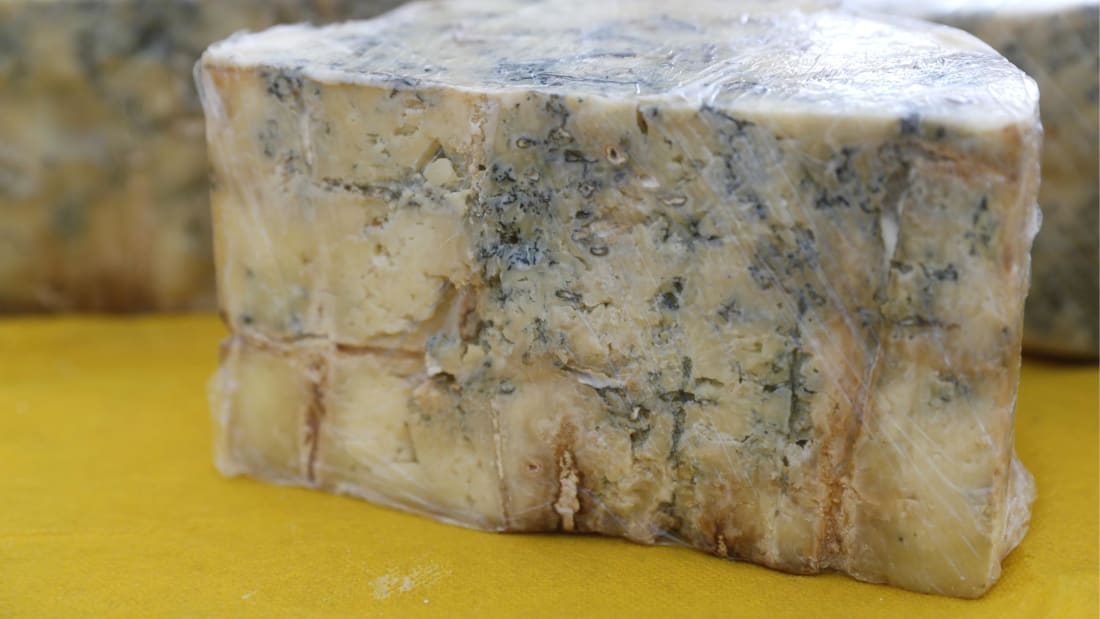دبي، الإمارات المتحدة العربية (CNN) -- تمتّع الأوروبيون في العصر الحديدي بالمأكولات التي ما زالت تشكّل جزءًا من نظامنا الغذائي اليوم، مثل الجبن الأزرق والجعة، وفق ما أظهرت دراسة أجريت على براز قديم.
وكقاعدة عامة، فإنّ العثور على بقايا لبراز الانسان بعد آلاف السنين غير ممكن، إلا في حال وُجد في أماكن محدّدة مثل كهوف جافة، أو في الصحراء، أو في بيئات مشبعة بالمياه، أو في المواطن الجليدية.
لكن من خلال دراسة براز قديم، عُثر عليه داخل مناجم للملح ما قبل التاريخ، في منطقة هالستات-داشستاين المدرجة ضمن قائمة اليونيسكو للتراث العالمي، غربي النمسا، اكتشف الباحثون بعض الدلائل "المفاجئة" منها وجود نوعين من فصائل الفطريات المستخدمة في إنتاج الجبن الأزرق والجعة.
وقد حفظت تركيزات الملح المرتفعة، ودرجة الحرارة السنوية الثابتة التي تبلغ 8 درجات مئوية داخل المنجم هذه العينات بشكل جيد.
وقال الباحثون إن نتائجهم تظهر أول دليل جزيئي على استهلاك الجبن الأزرق والجعة بالعصر الحديدي في أوروبا.
وقالت مؤلفة الدراسة كيرستن كواريك، وهي عالمة آثار تعمل في متحف التاريخ الطبيعي في فيينا لـCNN: "تمكّنا من إظهار الدور المهم للأطعمة المخمّرة في تاريخ البشرية منذ وقت طويل".
وأضافت أنّ "أساليب الطبخ كانت معقّدة، وتعتمد تقنيّات متطوّرة في تجهيز الأغذية، مثل التخمير، التي لم تهدف بالضرورة إلى حفظ الطعام، بقدر ما سعت للوصول إلى مذاق محدّد".
وأوضحت أنّه من "خلال هذه الدراسة أضفنا إلى تاريخ الجبن الطويل ومنتجات مشتقات الحليب، معلومة تُفيد بأنّ الجبن الأزرق تمّ إنتاجه بالعصر الحديدي في أوروبا قبل قرابة 2700 سنة".
وقد استخدم الباحثون التحليلات المعمّقة بهدف اكتشاف الميكروبات، والحمض النووي، والبروتينات، التي كانت متواجدة في نماذج البراز القديم، وشكّل النظام الغذائي للأشخاص الذين عاشوا سابقًا في هذه المنطقة.
وقال الباحثون إنّ النخالة كانت إحدى المواد الأكثر استخدامًا التي عًثر عليها في هذه البقايا، الى جانب أنواع أخرى من نباتات الحبوب. وهذا النظام الغذائي الغني بالألياف والنشويات، أُضيفت إليه البروتينات المستمدة من مروحة من أنواع الفاصولياء، والفاكهة، والمكسّرات، أو منتجات غذائية حيوانية.
وعندما توسّع الخبراء بأبحاثهم لشمل الفطريات، كانت مفاجأتهم الكبرى أنهم عثروا في إحدى بقايا العصر الحديدي، على كمية كبيرة من عفن بينسيليوم روكيفورتي وفطريات الخميرة المتواجدة في الجبن والجعة والخبز، تباعًا.
وأشارت كواريك إلى أنّ "عمال مناجم الملح في العصر الحديدي في جبل الملح هالستات، استخدموا تقنيات تخمير الأغذية بواسطة الميكروبات عمدًا على الأرجح، وهي ما زالت معتمدة حتى أيامنا هذه في صناعة الأغذية، وذلك قبل 2700 سنة".
وقال عالم الأحياء الدقيقة الباحث فرانك مايكسنر ومنسّق معهد اوراك لدراسات المومياءات في مدينة بولزانو الإيطالية لـCNN، إنّ الخريطة الجينية لهذه الفطريات التي عُثر عليها في البراز القديم "خضعت على الأرجح لآلية اختيار تجعلها مناسبة لتخمير الطعام"، مضيفًا: "لذلك نعتقد أن هذه الفطريات هي جزء من ثقافة تخمير سابقة".
ولفت الخبراء إلى أنّ عمّال المناجم القدماء الذين كانوا يخضعون إلى نظام غذائي غني، تتشابه مكوّنات أمعائهم الجرثومية مع تلك التي نجدها لدى الناس المعاصرين غير الغربيين (Non Westernized people)، الذي يتبعون نظامًا غذائيًا يستند إلى الفاكهة الطازجة والخضار والأغذية غير المعالجة.
وعن هذا الاكتشاف الذي نُشر الأربعاء في مجلة "Cell Press"، قال فريق العمل إن الأبحاث تشير إلى حدوث تحول أحدث في ميكروبيوم الأمعاء الغربية مع تغير عادات الأكل وأنماط الحياة.
